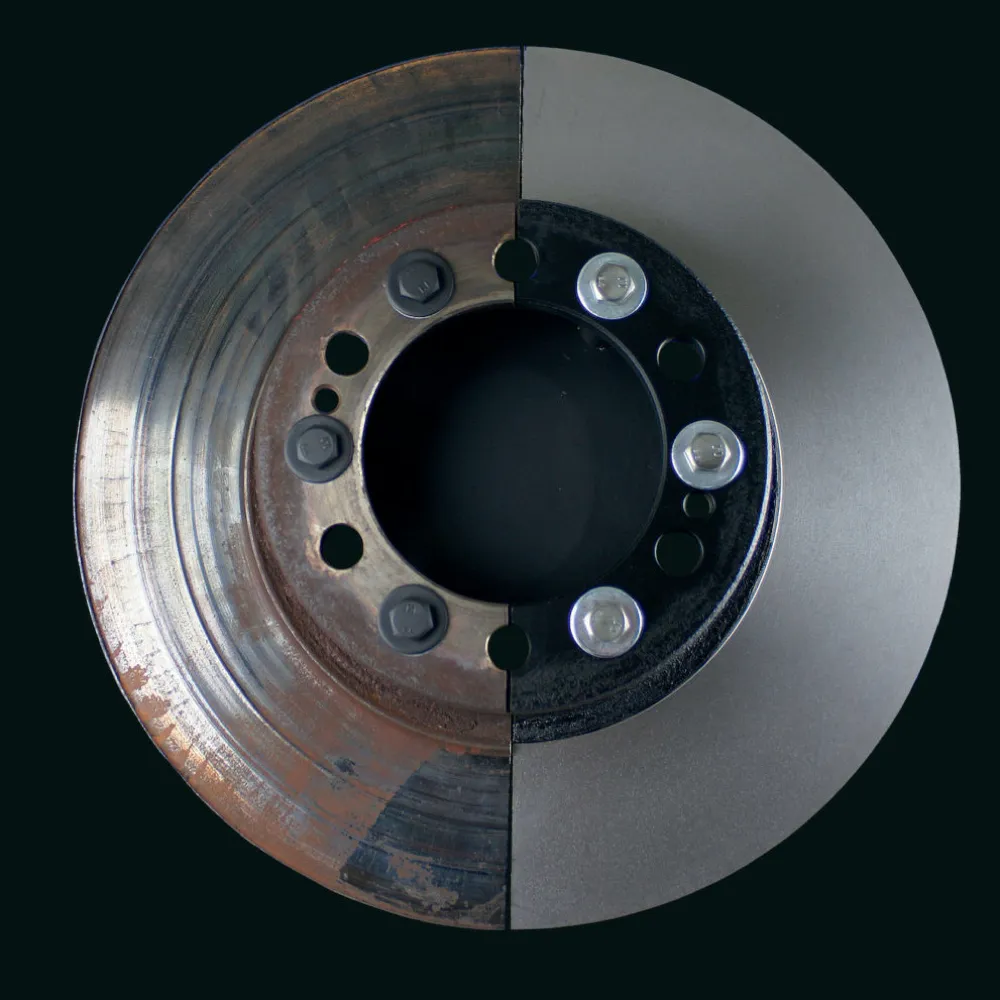Disc skimming, also known as rotor resurfacing or machining, is a precise maintenance procedure that involves shaving a thin layer of metal from the brake disc (rotor) surface to restore it to a perfectly flat and smooth condition.
It is often a cost-effective and performance-enhancing alternative to replacing brake discs, provided the discs are still above the manufacturer’s minimum thickness limit.
Here are the key benefits of the Disc Skimming process:
1. Eliminates Braking Vibration and Noise
This is the most immediate and noticeable benefit of disc skimming.
- Cures Brake Judder/Pulsation: Uneven wear, rust, or heat distortion (often incorrectly called “warping”) can cause the brake disc surface to become inconsistent. When the brake pads clamp down, they hit these high and low spots, causing a noticeable vibration or shudder through the steering wheel and brake pedal (brake judder). Skimming eliminates these thickness variations, restoring a perfectly smooth surface.
- Stops Squeals and Squeaks: Brake noise is often caused by the vibration of the brake pads against an uneven or scored rotor surface. By leveling the disc, disc skimming ensures the pad makes even contact, often quieting the braking system.
2. Restores Optimal Braking Performance
A smooth, true disc surface is essential for maximum safety and efficiency.
- Improved Pad-to-Rotor Contact: When installing new brake pads, skimming the rotors ensures the new pads mate perfectly with a flat surface. This allows the pads to deliver 100% friction coverage right away, eliminating the lengthy and sometimes problematic “bedding-in” period.
- Removes Scored/Corroded Surfaces: Disc skimming removes rust, corrosion, and shallow grooves (scoring) caused by worn-out brake pads. This restoration to a like-new surface maximizes the friction available, ensuring shorter stopping distances.
3. Extends Component Lifespan and Saves Money
Disc skimming maximizes the value of your existing components.
- Prolongs Rotor Lifespan: If your rotors have developed minor issues (like light scoring or slight judder) but are still thick enough, skimming allows you to repair them instead of discarding them. This lets you use the rotor for another pad change cycle, maximizing its usable life.
- Cost-Effective Solution: Brake disc skimming is significantly cheaper than purchasing and installing a new pair of high-quality brake discs and typically costs less than half the price of a full replacement, saving you money on parts and labor.
- Prevents Uneven Pad Wear: A skimmed, true rotor provides an even surface, preventing new brake pads from wearing down prematurely or unevenly.
When to Choose Disc Skimming vs. Replacement
| Choose Disc Skimming If… | Choose Replacement If… |
| Brake judder/vibration is present, but the damage is minor. | The disc has reached its Minimum Thickness (MIN TH) stamp. |
| You are installing new pads and want the best possible initial friction. | The disc has deep grooves, severe scoring, or major cracks. |
| The goal is to eliminate brake squeal caused by an uneven surface. | The cost of skimming is nearly equal to the cost of a new rotor. |
| The rotor is still well above the manufacturer’s minimum thickness specification. |
Post Views: 46




